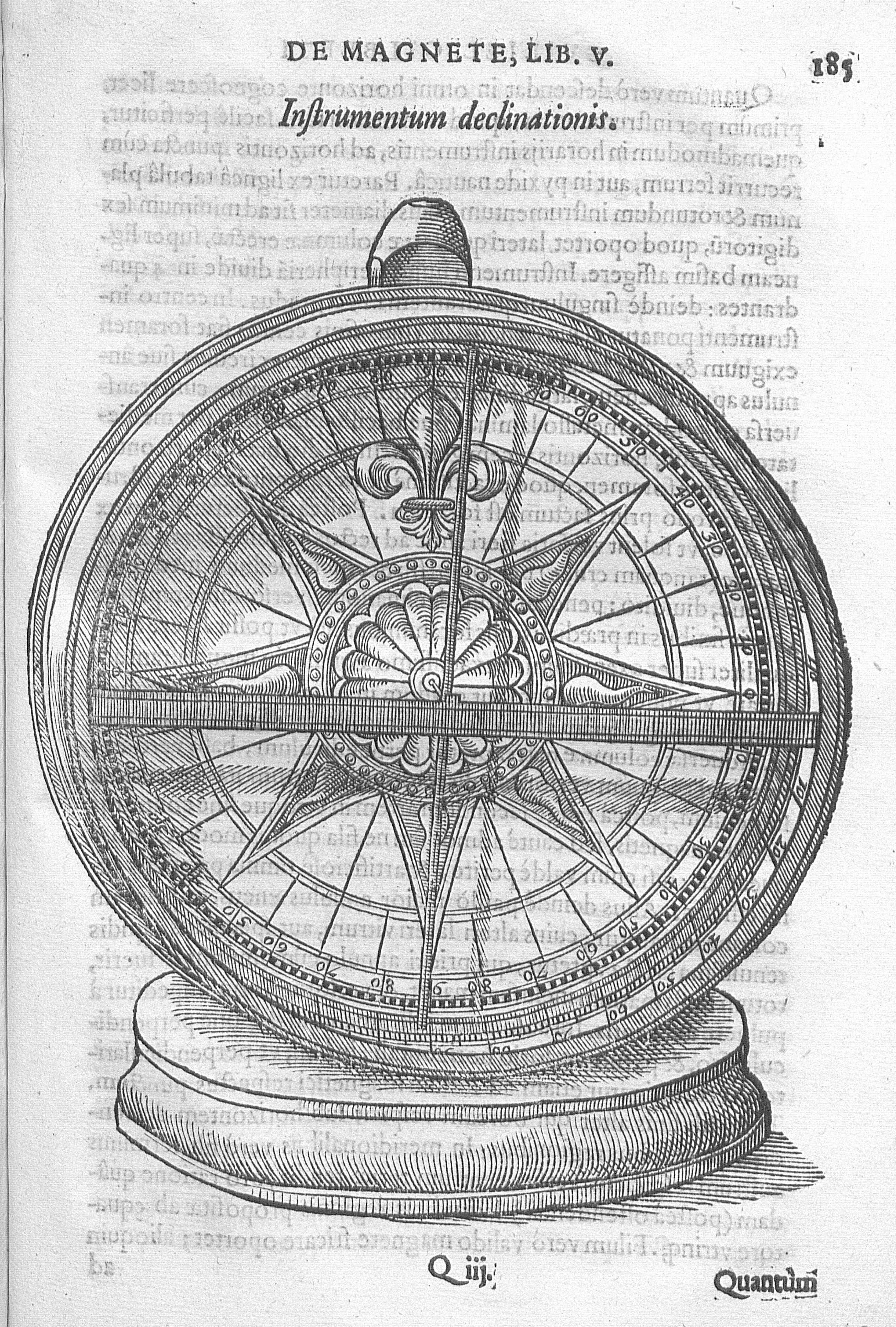William Gilbert (1544-1603) was an English scientist and physician who is credited by many as the “father of electricity and magnetism”. He studied in Cambridge and soon became one of the most respected and successful physicians in England. In 1600 he was appointed the court physician to Queen Elizabeth I and he published the book De Magnete, which quickly became the standard work throughout Europe on electrical and magnetic phenomena.
The Elizabethan era was an era of seafaring explorations and the magnetic compass was essential for mariners to navigate into unknown seas, but little was known about the lodestone (magnetic iron ore) or magnetized iron. Gilbert tested many folk tales about the influence of herbs and animals on magnetism and added much new knowledge based on his own experiments, especially exploring the difference between magnetic and the amber effect, what he called, for the first time, “electricity” electricus being the Greek name for amber. He is often credit with being the father of the experimental approach of modern science.
His wider philosophical theory conceived the whole Earth as being a gigantic magnet, a perfectly spherical lodestone. Even though he did not commit to either the geocentric or the heliocentric hypothesis, proponents of the new cosmology such as Kepler and Galileo later conceived the attraction between planets later called gravity as analogous (or perhaps identical) to Gilbert’s magnetic attraction between the Earth, the sun and other planets.
The illustration here shows an instrument for measuring declination, the angular deviation between magnetic north (the direction the north end of a compass needle points, corresponding to the direction of the Earth's magnetic field lines) and true north (the direction along a meridian towards the geographic North Pole). This angle varies depending on position on the Earth's surface, and changes over time. The whole book V of De Magnete is dedicated to the detailed description of the way of building such instruments and to measure and define declination.
Sources- https://ebooks.adelaide.edu.au/g/gilbert/william/on-the-magnet/book5.1.html
- http://www.gutenberg.org/files/33810/33810-h/33810-h.htm pp. 185 ff.
- Baigrie, Brian Scott, Electricity and Magnetism: A Historical Perspective, pp. 9-13
- https://books.google.com.hk/books?id=3XEc5xkWxi4C&pg=PA9&lpg=PA9&dq=gilbert+Instrument+of+the+Declination&source=bl&ots=RFjXspMoqB&sig=40nhw8mHmgh6tKwP2fFL3_WVAgE&hl=en&sa=X&ei=EuxCVbbwJuHJmAWqi4DIAw&redir_esc=y#v=onepage&q=gilbert%20Instrument%20of%20the%20Declination&f=false
- http://www.gettyimages.com/detail/news-photo/illustration-showing-an-instrument-for-measuring-news-photo/90736304
- Ludovico Geymonat (ed.) Storia del pensiero filosofico e scientifico. Milano, Garzanti, 1970-1972, vol. 2, pp. 94-95
- http://galileo.rice.edu/sci/gilbert.html
- http://en.wikipedia.org/wiki/William_Gilbert_(astronomer)
- http://search.credoreference.com/content/topic/gilbert_william_1544_1603/
- http://www.rare-earth-magnets.com/william-gilbert/


